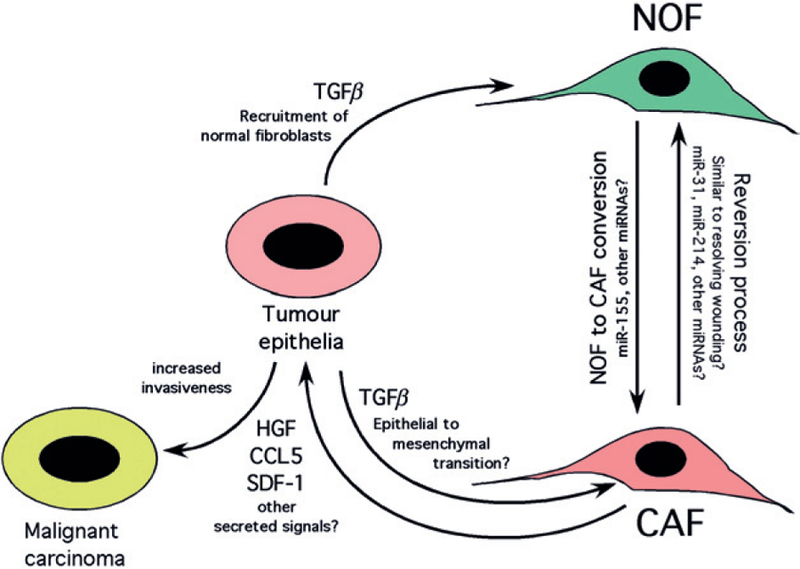Figure 2.

Dual mechanisms explaining the origin of CAFs and their tumour-promoting activity. Tumour cells recruit normal fibroblasts (NOFs) and promote their conversion to carcinoma-associated fibroblasts (CAFs) in part through deregulation of miRNAs, although how deregulation of these miRNAs is achieved is not known. CAFs also likely arise in some tumour types through EMT from tumour epithelia and thus harbour some of the same mutations, such as inactivation of p53, PTEN and RB, as the tumour cells from which they are derived. The extent to which CAFs are derived from NOFs as opposed to tumour epithelia via EMT is also unknown, and clearly may vary in real time as a function of selective pressures and prevalence of unique tumour clones and other cell types in the tumour microenvironment. CAFs promote tumour cell progression to invasiveness through secretion of key chemokines and MMPs, but may be susceptible to targeted therapies that promote their ‘reversion’ to NOFs, perhaps by sponging miRNAs that drive conversion, or by specific inhibitors of EMT.
